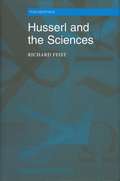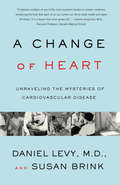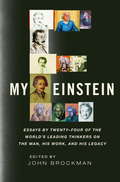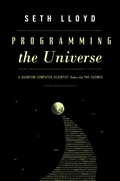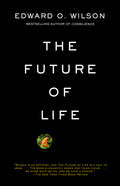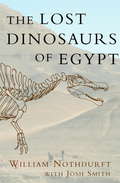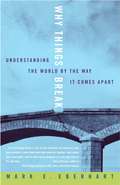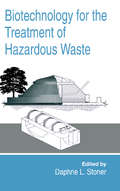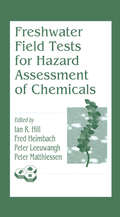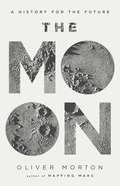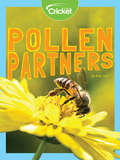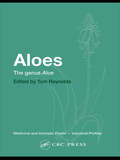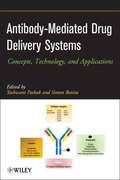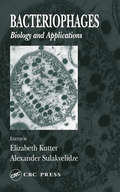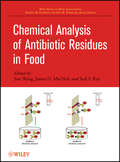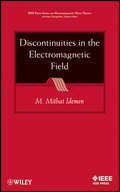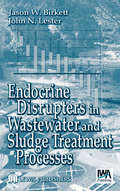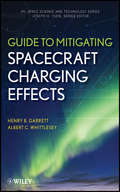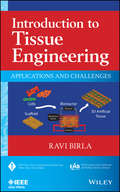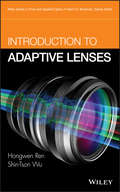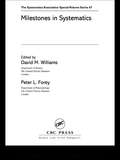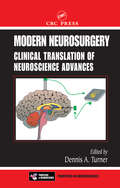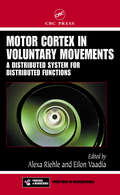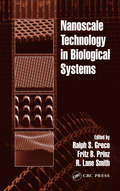- Table View
- List View
القانون في الطب 2
by ابن سينااعلم أن المرارة كيس معلّق من الكبد إلى ناحية المعدة من طبقة واحدة عصبانية ولها ضمّ إلى الكبد ومجرى فيه يجذب الخلط الرقيق الموافق لها والمرار الأصفر ويتصل هذا المجرى بنفس الكبد والعروق التي فيها يتكون الدم وله هناك شعب كثيرة غائصة وإن كان مدخل عمودها من التقعير والفم ومجرى إلى ناحية المعدة. والأمعاء ترسل فيه إلى ناحيتهما فضل الصفراء على ما ذكرناه في الكتاب الأول. وهذا المجرى يتصل أكثر شعبه بالاثني عشري وربما اتصل شيء صغير منه بأسفل المعدة وربما وقع الأمر بالضد فصار الأكبر المتصل بالوعاء الأغلظ إلى أسفل المعدة والأصغر إلى الاثني عشري. وفي أكثر الناس هو مجرى واحد متصل بالاثني عشري. وأما مدخل الأنبوبة المصاصة للمرارة في المرارة فقريب من مدخل أنبوبة المثانة في المثانة. ومن عادة الأطباء الأقدمين أن يسموا المرار الكيس الأصغر كما أنه من عادتهم أن يسموا المثانة الكيس الأكبر ومن المنافع في خلقة المرارة تنقية الكبد من الفضل الرغوي وأيضاً تسخينها كالوقود تحت القدر وأيضاً تلطيف الدم وتحليل الفضول وأيضاً تحريك البراز وتنظيف الأمعاء وشدّ ما يسترخي من العضل حوله وإنما لم يخلق في الأكثر للمرارة سبيل إلى المعدة لتغسل رطوباتها بالمرة كما تغسل بها في رطوبات الأمعاء لأن المعدة تتأذى بذلك وتغثّي ويفسد الهضم فيها بما يخالط الغذاء من خلط رديء ويأتيها من العرق الضارب. وللعصبة التي تتصل بالكبد شعبتان صغيرتان جداً والمرارة كالمثانة طبقة واحدة مؤلفة من أصناف الليف الثلاثة وإذا لم تجذب المرارة المرار أو جذبت فلم تستنق عنه حدثت آفات فإن الصفراء إذا احتبست فوق المرارة أو رمت الكبد وأورثت اليرقان وربما عفنت وأحدثت حميات رديئة. وإذا سالت إلى أعضاء البول بإفراط قرحت وإذا سالت إلى عضو ما أحدثت الحمرة والنملة وإذا دبت في البدن كله ساكنة غير هائجة أحدثت اليرقان وإذا سالت عن المرارة إلى الأمعاء بإفراط أورثت الإسهال المراري والسحج.
Husserl and the Sciences: Selected Perspectives (Philosophica)
by Richard FeistEdmund Husserl (1859-1938) is one of the previous century's most important thinkers. Often regarded as the "Father of phenomenology," this collection of essays reveals that he is indeed much more than that. The breadth of Husserl's thought is considerable and much remains unexplored. An underlying theme of this volume is that Husserl is constantly returning to origins, revising his thought in the light of new knowledge offered by the sciences.
Change of Heart
by Daniel LevyA Change of Heartis a detailed account of the revolutionary Framingham Heart study -- which, over the years, has provided conclusive evidence that cardiovascular disease is largely the result of measurable and modifiable risk factors. First begun in 1948, not long after Franklin Delano Roosevelt succumbed to a massive stroke, the study of over 5,000 citizens of Framingham, Massachusetts, changed the course of medical history. The lessons learned in Framingham allow each of us to control our risk of heart disease and stroke, two of the leading causes of death in the United States. Here is a clear-eyed and intriguing assessment of the achievements of this study and of its continuing importance to our health today.
My Einstein
by John BrockmanIn this fascinating volume, today’s foremost scientists discuss their own versions and visions of Einstein: how he has influenced their worldviews, their ideas, their science, and their professional and personal lives. These twenty-four essays are a testament to the power of scientific legacy and are essential reading for scientist and layperson alike. Contributors include: • Roger Highfield on the Einstein myth • John Archibald Wheeler on his meetings with Einstein • Gino C. Segrè, Lee Smolin, and Anton Zeilinger on Einstein’s difficulties with quantum theory • Leon M. Lederman on the special theory of relativity • Frank J. Tipler on why Einstein should be seen as a scientific reactionary rather than a scientific revolutionary
Programming the Universe
by Seth LloydThe universe is made of bits. The way in which the universe registers and processes information determines what it is and how it behaves. It has been known for more than a century that every piece of the universe - every electron, atom, and molecule - registers bits of information. It is only in the last ten years, however, with the discovery and development of quantum computers, that scientists have gained a fundamental understanding of just how that information is registered and processed. Seth Lloyd calls this fundamental understanding of the universe in terms of information processing 'the computational universe', and the purpose of this book is to show how the programmed, computational universe works. Starting from basic concepts of physics, Programming the Universe shows how all physical systems register information. It gives an accessible account of how information is stored and processed at the level of electrons, atoms, and molecules. It shows how the information processing power of the universe can be harnessed to build quantum computers and explains how the universe itself behaves like a gigantic computer, transforming and processing information. It traces the history of information processing from the big bang to the present day, and reveals how the computational ability of the universe promotes the evolution of complex structures such as life. Programming the Universe is the story of the universe and the bits it is made of.
The Future of Life
by Edward O. WilsonOur world is far richer than previously conceived, yet so ravaged by human activity that half its species could be gone by the end of the present century. These two contrasting themes - unexpected magnificence and underestimated peril - have originated during the past two decades of research. In this timely and important new book, one of our greatest living scientists describes exactly what treasures of the natural world we are about to lose forever and what we can do right now to save them. Destruction of natural habitats, the rampant spread of invasive species, pollution, uncontrolled population growth and over harvesting are the main threats to our natural world. Wilson explains how each of these elements works to undo the web of life that supports us, and why it is in our best interests to stop it. The Future of Life is a magisterial accomplishment - both a moving description of the world's astonishing animals and plants and a guidebook for the protection of all its species, including our own.
The Lost Dinosaurs of Egypt
by William Nothdurft Josh SmithThe date is January 11, 1911. A young German paleontologist, accompanied only by a guide, a cook, four camels, and a couple of camel drivers, reaches the lip of the vast Bahariya Depression after a long trek across the bleak plateau of the western desert of Egypt. The scientist, Ernst Freiherr Stromer von Reichenbach, hopes to find fossil evidence of early mammals. In this, he will be disappointed, for the rocks here will prove to be much older than he thinks. They are nearly a hundred million years old. Stromer is about to learn that he has walked into the age of the dinosaurs.At the bottom of the Bahariya Depression, Stromer will find the remains of four immense and entirely new dinosaurs, along with dozens of other unique specimens. But there will be reversals—shipments delayed for years by war, fossils shattered in transit, stunning personal and professional setbacks. Then, in a single cataclysmic night, all of his work will be destroyed and Ernst Stromer will slip into history and be forgotten.The date is January 11, 2000—eighty-nine years to the day after Stromer descended into Bahariya. Another young paleontologist, Ameri-can graduate student Josh Smith, has brought a team of fellow scientists to Egypt to find Stromer’s dinosaur graveyard and resurrect the German pioneer’s legacy. After weeks of digging, often under appalling conditions, they fail utterly at rediscovering any of Stromer’s dinosaur species.Then, just when they are about to declare defeat, Smith’s team discovers a dinosaur of such staggering immensity that it will stun the world of paleontology and make headlines around the globe.Masterfully weaving together history, science, and human drama, The Lost Dinosaurs of Egypt is the gripping account of not one but two of the twentieth century’s great expeditions of discovery.
Why Things Break: Understanding the World By the Way It Comes Apart
by Mark E. EberhartDid you know— • It took more than an iceberg to sink the Titanic. • The Challenger disaster was predicted. • Unbreakable glass dinnerware had its origin in railroad lanterns. • A football team cannot lose momentum. • Mercury thermometers are prohibited on airplanes for a crucial reason. • Kryptonite bicycle locks are easily broken. “Things fall apart” is more than a poetic insight—it is a fundamental property of the physical world. Why Things Break explores the fascinating question of what holds things together (for a while), what breaks them apart, and why the answers have a direct bearing on our everyday lives. When Mark Eberhart was growing up in the 1960s, he learned that splitting an atom leads to a terrible explosion—which prompted him to worry that when he cut into a stick of butter, he would inadvertently unleash a nuclear cataclysm. Years later, as a chemistry professor, he remembered this childhood fear when he began to ponder the fact that we know more about how to split an atom than we do about how a pane of glass breaks. InWhy Things Break, Eberhart leads us on a remarkable and entertaining exploration of all the cracks, clefts, fissures, and faults examined in the field of materials science and the many astonishing discoveries that have been made about everything from the explosion of the space shuttle Challenger to the crashing of your hard drive. Understanding why things break is crucial to modern life on every level, from personal safety to macroeconomics, but as Eberhart reveals here, it is also an area of cutting-edge science that is as provocative as it is illuminating.
Biotechnology for the Treatment of Hazardous Waste
by Daphne L. StonerThe development of biologically based processes for the treatment of hazardous inorganic and organic wastes is a multi-disciplinary effort requiring the consideration of a number of biological, chemical, and physical parameters, as well as the effective teaming of biologists, chemists, engineers, and regulatory agencies. This new text/reference bridges the disciplines in a unique way, allowing an exchange of fundamental information to take place. The book begins with a description of the biological transformations of inorganic and organic compounds and a review of strategies that may be used for the treatment of hazardous wastes. It continues with a discussion of the physiological and engineering factors that must be considered for successful process development and concludes with a discussion of the regulations that have influenced biological waste treatment and environmental remediation.
Freshwater Field Tests for Hazard Assessment of Chemicals
by Peter Matthiessen Fred Heimbach Ian R. Hill Peter LeeuwanghFreshwater field tests are an integral part of the process of hazard assessment of pesticides and other chemicals in the environment. This book brings together international experts on microcosms and mesocosms for a critical appraisal of theory and practice on the subject of freshwater field tests for hazard assessment. It is an authoritative and comprehensive summary of knowledge about freshwater field tests, with particular emphasis on their optimization for scientific and regulatory purposes. This valuable reference covers both lotic and lentic outdoor systems and addresses the choice of endpoints and test methodology. Instructive case histories show how to extrapolate test results to the real world.
The Moon: A History for the Future (Economist Books)
by Oliver Morton The EconomistAn intimate portrait of the Earth's closest neighbor--the Moon--that explores the history and future of humankind's relationship with itEvery generation has looked towards the heavens and wondered at the beauty of the Moon. Fifty years ago, a few Americans became the first to do the reverse--and shared with Earth-bound audiences the view of their own planet hanging in the sky instead.Recently, the connection has been discovered to be even closer: a fragment of the Earth's surface was found embedded in a rock brought back from the Moon. And astronauts are preparing to return to the surface of the Moon after a half-century hiatus--this time to the dark side.Oliver Morton explores how the ways we have looked at the Moon have shaped our perceptions of the Earth: from the controversies of early astronomers such as van Eyck and Galileo, to the Cold War space race, to the potential use of the Moon as a stepping stone for further space exploration.Advanced technologies, new ambitions, and old dreams mean that men, women, and robots now seem certain to return to the Moon. For some, it is a future on which humankind has turned its back for too long. For others, an adventure yet to begin.
Pollen Partners
by Amy TaoDo you know how new flowers are made? It’s a process called pollination, which is what happens when pollen is moved from one flower to another! The flowers rely on animals like bees and hummingbirds to do this for them, and in return, they offer the animals delicious nectar to eat. What is your favorite pollen-moving animal?
Aloes: The genus Aloe (Medicinal And Aromatic Plants S. - Industrial Profiles Ser. #Vol. 35)
by Tom ReynoldsAloes are a large genus of plants, about 450 species, from sub-Saharan Africa, Madagascar, and parts of Arabia. Many species are widespread in warm or tropical semi-arid regions, yet the distribution of others is limited to a few living in desert or wet mountainous regions. While some species have been adopted as medicinal plants since ancient time
Antibody-Mediated Drug Delivery Systems
by Yashwant Pathak Simon BenitaThis book covers various aspects of antibody mediated drug delivery systems - theoretical aspects, processing, viral and non-viral vectors, and fields where these systems find and /or are being evaluated for applications as therapeutics and diagnostic treatment. Chapters discuss actual applications of techniques used for formulation and characterization. Applications areas include cancer, pulmonary, ocular diseases; brain drug delivery; and vaccine delivery. The contributing authors represent over 10 different countries, covering recent developments happening around the globe.
Bacteriophages: Biology and Applications
by Elizabeth Kutter Alexander SulakvelidzeIn response to the emergence of pathogenic bacteria that cannot be treated with current antibiotics, many researchers are revisiting the use of bacteriophages, or phages, to fight multidrug-resistant bacteria. Bacteriophages: Biology and Applications provides unparalleled, comprehensive information on bacteriophages and their applications, such as
Chemical analysis of antibiotic residues in food
by Jian Wang James D. Macneil Jack F. KayAn insightful exploration of the key aspects concerning the chemical analysis of antibiotic residues in food The presence of excess residues from frequent antibiotic use in animals is not only illegal, but can pose serious health risks by contaminating products for human consumption such as meat and milk. Chemical Analysis of Antibiotic Residues in Food is a single-source reference for readers interested in the development of analytical methods for analyzing antibiotic residues in food. It covers themes that include quality assurance and quality control, antibiotic chemical properties, pharmacokinetics, metabolism, distribution, food safety regulations, and chemical analysis. In addition, the material presented includes background information valuable for understanding the choice of marker residue and target animal tissue to use for regulatory analysis. This comprehensive reference: Includes topics on general issues related to screening and confirmatory methods Presents updated information on food safety regulation based on routine screening and confirmatory methods, especially LC-MS Provides general guidance for method development, validation, and estimation of measurement uncertainty Chemical Analysis of Antibiotic Residues in Food is written and organized with a balance between practical use and theory to provide laboratories with a solid and reliable reference on antibiotic residue analysis. Thorough coverage elicits the latest scientific findings to assist the ongoing efforts toward refining analytical methods for producing safe foods of animal origin.
Discontinuities in the electromagnetic field
by Idemen M. MithatA multifaceted approach to understanding, calculating, and managing electromagnetic discontinuities Presenting new, innovative approaches alongside basic results, this text helps readers better understand, calculate, and manage the discontinuities that occur within the electromagnetic field. Among the electromagnetic discontinuities explored in this volume are: Bounded jump discontinuities at the interfaces between two media or on the material sheets that model very thin layers Unbounded values at the edges of wedge-type structures Unbounded values at the tips of conical structures The text examines all the key issues related to the bodies that carry the interfaces, edges, or tips, whether these bodies are at rest or in motion with respect to an observer. In addition to its clear explanations, the text offers plenty of step-by-step examples to clarify complex theory and calculations. Moreover, readers are encouraged to fine-tune their skills and knowledge by solving the text's problem sets. Three fundamental, classical theories serve as the foundation for this text: distributions, confluence, and the special theory of relativity. The text sets forth the fundamentals of all three of these theories for readers who are not fully familiar with them. Moreover, the author demonstrates how to solve electromagnetic discontinuity problems by seamlessly combining all three theories into a single approach. With this text as their guide, readers can apply a unique philosophy and approach to the investigation and development of structures that have the potential to enhance the capabilities of electronics, antennas, microwaves, acoustics, medicine, and many more application areas.
Endocrine Disrupters in Wastewater and Sludge Treatment Processes
by Jason W. Birkett John N. LesterEndocrine Disrupting Chemicals (EDCs) have been shown to produce changes in the endocrine system of organisms, leading to increases in cancers and abnormalities in reproductive structure and function. This book presents research on the endocrine-disrupting effects of sewage and industrial effluents, covering the sources, fate, and transport of EDCs
Guide to Mitigating Spacecraft Charging Effects
by Henry B. Garrett Albert C. WhittleseyThe definitive guide to the modern body of spacecraft charging knowledge--from first principles for the beginner to intermediate and advanced conceptsThe only book to blend the theoretical and practical aspects of spacecraft charging, Guide to Mitigating Spacecraft Charging Effects defines the environment that not only creates the aurora, but which also can have significant effects on spacecraft, such as disruption of science measurements and solar arrays from electrostatic discharge (ESD). It describes in detail the physics of the interaction phenomenon as well as how to construct spacecraft to enhance their survivability in the harsh environment of space.Combining the authors' extensive experience in spacecraft charging--and in their provision of design support to NASA, JPL, the commercial satellite market, and numerous other projects--this incredible book offers both a robust physics background and practical advice for neophytes in the field and experienced plasma physicists and spacecraft engineers.In addition to containing numerous equations, graphs, tables, references, and illustrations, Guide to Mitigating Spacecraft Charging Effects covers:Solar cell technology, especially higher voltage arrays, and the new design approaches that are appropriate for themInformation about the space plasma environmentNew analytic computer codes to analyze spacecraft chargingSpacecraft anomalies and failures which emphasized designs that are of greater importance than others
Introduction to Tissue Engineering
by Ravi BirlaCovering a progressive medical field, Tissue Engineering describes the innovative process of regenerating human cells to restore or establish normal function in defective organs. As pioneering individuals look ahead to the possibility of generating entire organ systems, students may turn to this textbook for a comprehensive understanding and preparation for the future of regenerative medicine. This book explains chemical stimulations, the bioengineering of specific organs, and treatment plans for chronic diseases. It is a must-read for tissue engineering students and practitioners.
Introduction to adaptive lenses
by Shin-Tson Wu Hongwen RenPresents readers with the basic science, technology, and applications for every type of adaptive lens An adaptive lens is a lens whose shape has been changed to a different focal length by an external stimulus such as pressure, electric field, magnetic field, or temperature. Introduction to Adaptive Lenses is the first book ever to address all of the fundamental operation principles, device characteristics, and potential applications of various types of adaptive lenses. This comprehensive book covers basic material properties, device structures and performance, image processing and zooming, optical communications, and biomedical imaging. Readers will find homework problems and solutions included at the end of each chapter--and based on the described device structures, they will have the knowledge to fabricate adaptive lenses for practical applications or develop new adaptive devices or concepts for advanced investigation. Introduction to Adaptive Lenses includes chapters on: Optical lenses Elastomeric membrane lenses Electro-wetting lenses Dielectrophoretic lenses Mechanical-wetting lenses Liquid crystal lenses This is an important reference for optical engineers, research scientists, graduate students, and undergraduate seniors.
Milestones in Systematics
by David M. Williams Peter L. ForeyPresenting a historical analysis of the evolution of systematics during the last one hundred years, Milestones in Systematics reviews many of the major issues in systematic theory and practice that have driven the working methods of systematics during the 20th century and looks at the issues most likely to preoccupy systematists in the immediate fu
Modern Neurosurgery: Clinical Translation of Neuroscience Advances
by Dennis A.Turner M.A.Focusing on how increased understanding of brain function affects clinical neuroscience, this incisive text explores the interface between neuroscience and clinical neuroscience advances by examining the hypotheses that drive this evolution. The author reviews the relevant underpinnings of new neurosurgical techniques, treatments, and conceptual ap
Motor Cortex in Voluntary Movements: A Distributed System for Distributed Functions
by Alexa Riehle Eilon VaadiaAs one of the first cortical areas to be explored experimentally, the motor cortex continues to be the focus of intense research. Motor Cortex in Voluntary Movements: A Distributed System for Distributed Functions presents developments in motor cortex research, making it possible to understand and interpret neural activity and use it to recons
Nanoscale Technology in Biological Systems
by Fritz B. Prinz Ralph S. Greco R. Lane SmithNanoscale Technology in Biological Systems reviews recent accomplishments in the field of nanobiology and introduces the application of nanoscale matrices to human biology. It focuses on the applications of nanotechnology fabrication to biomedical devices and discusses new physical methods for cell isolation and manipulation and intracellular commu

